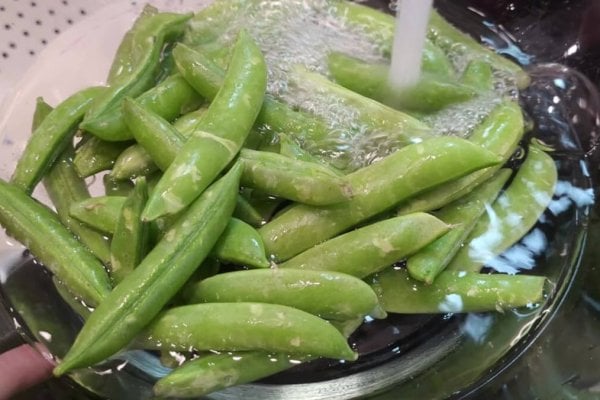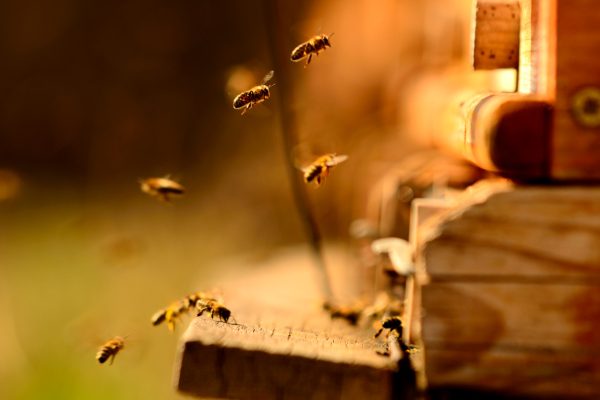Many people ask us, if they want to be self-sufficient, raising nearly 100% of their food from their homestead, how much land is needed to raise a year’s worth of food? We’re breaking it all down in this post.
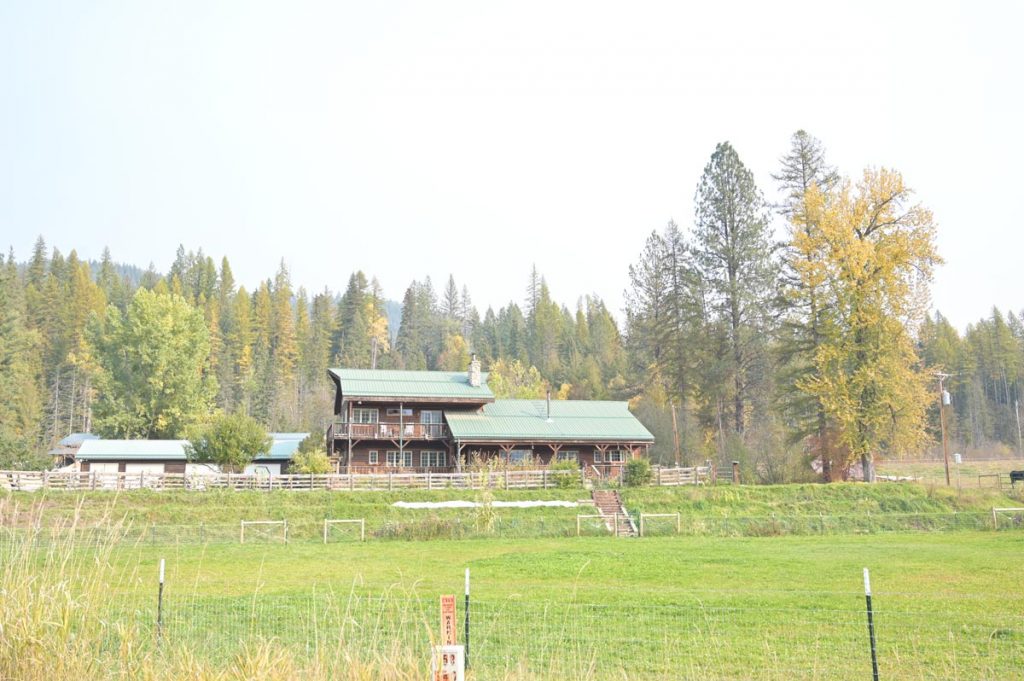
Keep in mind that most of us can’t grow things like olives for olive oil, sugar (unless you have bees for honey), vanilla beans, etc., so this isn’t a 100% self-sufficiency plan! For those looking to move more toward the goal of less reliance on the grocery store and more self-sufficiency from our homesteads, how much space is needed?
How Much Land is Needed for a Year of Food?
This post will break down the amount of space you need to grow or raise a year’s worth of food from gardens, livestock, orchards and herb gardens. Though this isn’t comprehensive, and many of the answers will depend on your unique situation (especially your water situation), the following is a general outline of how much space it could take to raise a year’s worth of food.
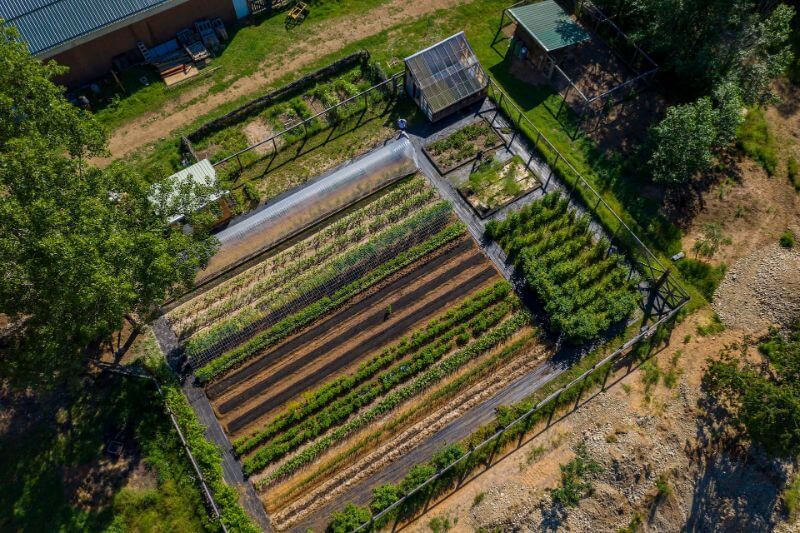
How Much Land Are We Using?
We first have to qualify that we have a larger than average size family. On any given day, we’re feeding about 15 people for breakfast, lunch and dinner. So our needs to raise a year’s worth of food are going to look different than the average household.
We live on a 40-acre homestead but are actively utilizing just under five acres. We’re producing most of what we mentioned above on these five acres, with the exception of our beef cattle. We don’t quite have the pasture land to support all our cattle, so we either use some of the less ideal parts of our homestead or lease land where they can graze.
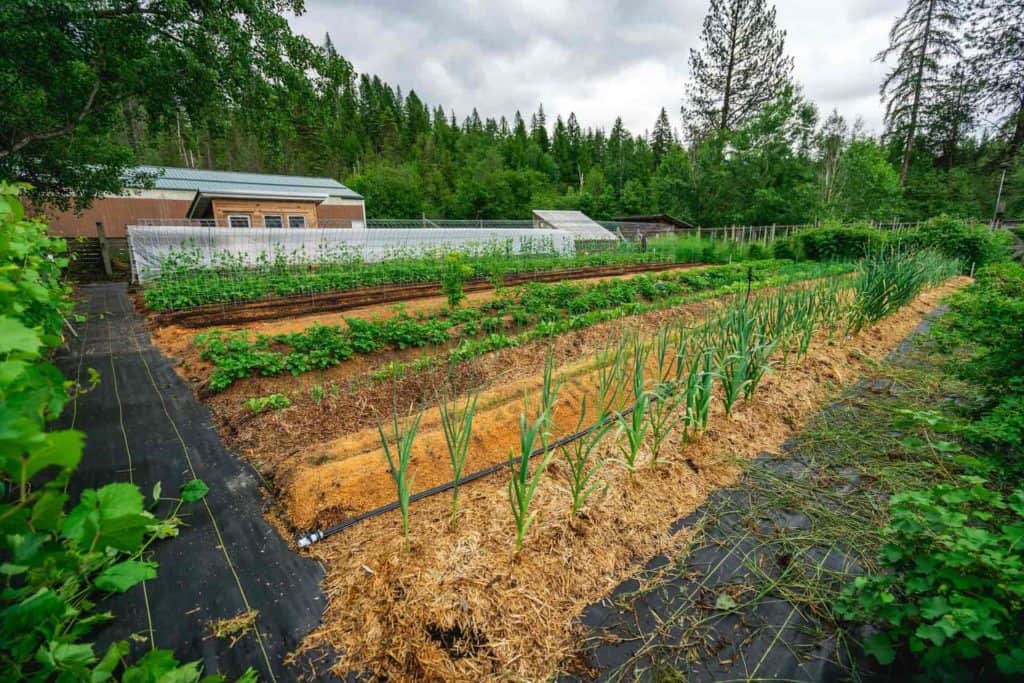
Gardens
The general rule of thumb when it comes to growing a garden is to have 100 square feet of gardening space (traditional row gardens) per person for fresh eating only. To preserve food and put it up for the non-growing season, you’re looking at 200 square feet of gardening space per person.
According to the book All New Square Foot Gardening by Mel Bartholomew you need as little as 16 square feet per person for fresh eating and about 32 square feet per person to have enough for preserving!
These are all general rules of thumb, and there are many factors that play into how well you can grow in a small space. We recommend checking out Steve Solomon’s book, Gardening When it Counts because he covers this topic very, very well and goes through the scenarios of soil quality and water.
If you’d like to grow culinary herbs or a medicinal herb garden, you’ll want to increase this square footage just a bit, but you can grow a lot of herbs for fresh eating and preserving in a small amount of space.
If you’d like more tips on how to grow a year’s worth of food, check out the podcast I did with Melissa K Norris. She has some great tips on layering in specific items year over year until you’re growing and preserving a year’s worth of food.
If you don’t have a large garden area, utilize vertical growing methods (like a hoop house or Greenstalk growing towers) to add more growing space.
You’ll probably want to check out this post on how to store a year’s worth of food, including pantry organization tips.

Fruit and Nut Trees
When it comes to fruit and nut trees, it’s easy to get carried away and want an entire orchard of trees. The reality is you only need as many fruit and nut trees as will feed your family for a year. Maybe a bit extra to give away, to use as trade, or to supplement feeding your animals (this is especially great for nut trees).
When you figure all this out, you’re really looking at about one to two semi-dwarf trees of any given type per family of four. A semi-dwarf fruit tree canopy can take up to 100 square feet when fully grown, but keep in mind when utilizing permaculture practices and building food forests, you can tuck a lot of food-growing space into a small area.
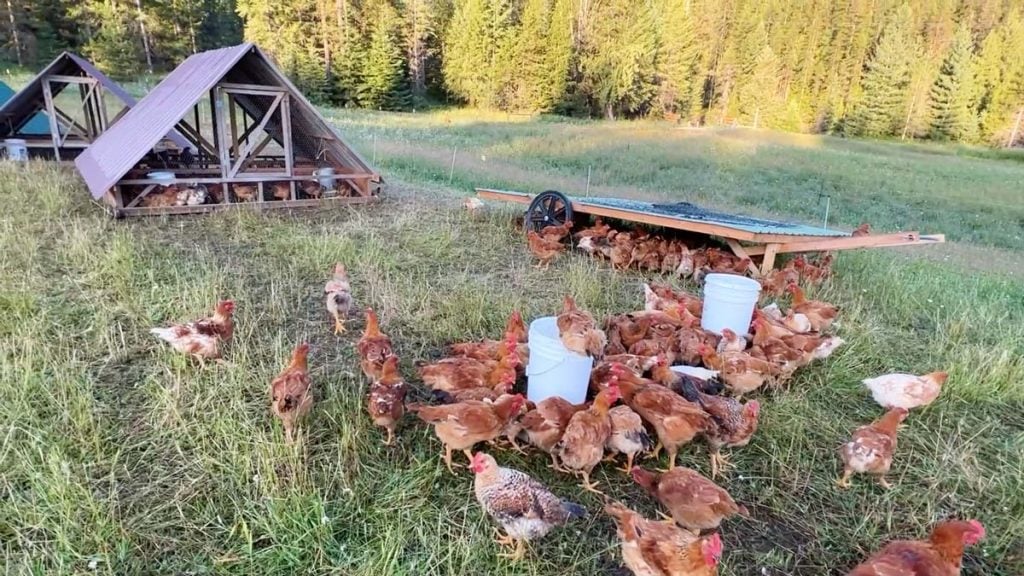
Livestock
Let’s now discuss the various livestock we raise on our homestead. We’ll list them in order of importance (in our opinion) and discuss how much space each one requires.
- Milk Cow – Our milk cow is extremely important and valuable on our homestead. (And now we’ve added another dairy cow to the homestead!) Second only to our garden, our dairy animals provide so much food in the form of milk and cream, which we then turn into butter, sour cream, cream cheese, yogurt, hard cheeses, ice cream and more. Furthermore, our one dairy cow produces roughly 50 pounds of fertilizer each day to be turned into compost and used in the garden and pasture. You can raise a cow on about 1/4 acre and feed only hay. We’ve done the math and she’ll still save you money if you’re turning all her milk and cream into dairy products. We like to graze our cow on pasture at least half the year so about two to three acres is a good amount of land. The dryer the climate, the more land will be required. (Keep in mind we stack other animals with our dairy cow, so those two to three acres aren’t solely for the dairy cow.)
- Chickens – We’ll discuss both egg-laying chickens and meat chickens here.
- Egg-Layers – If you don’t have free-range or pasture for the chickens, you’ll need about six square feet per chicken (this is the coop and outdoor area combined). If they have free-range abilities, then three to four square feet per bird. An average family of four needs about 10-15 chickens, this isn’t a large space. Between 600-900 square feet is all you’d need.
- Meat Chickens – About 75 birds are a good number of meat chickens for a family of four. This is how many chickens fit in a standard 10×12-foot chicken tractor. You can rotationally graze those birds in about 6300 square feet. This is a little over an eighth of an acre. You can run your layers behind them or get two runs per year on that space. Or, cut the number of birds down to 25 and use a coop half the size, then cut that total acreage number in half.
- The great thing about egg-laying chickens and meat chickens is that they can be run in the pasture behind the dairy cow. So you don’t need additional land for these three; you can stack them.
- Pigs – An average family of four can probably get by with one pig per year. However, pigs do better with a buddy, so we recommend raising two per year. Pigs and cows make great companion animals because they work so well together. If you want pastured pigs, you can run them in the same rotation with the cow and chickens, utilizing zero extra space while the season allows. Pigs can also live in the “edges” of your land where it’s wooden or brushy. They can actually help clear forest land really well. When pigs are in a pen, you’re looking at about 250 square feet per pig. You can feed your pig excess milk or whey and the pigs can help spread out manure into the pastures.
- Lamb & Goats – If you’re going to raise lamb or goats, you’ll want to raise at least two. They are herd animals and do much better with at least one buddy. We don’t recommend raising lambs in a pen or stall, they really do best when out on pasture. Two lambs could be raised in about 1/2 acre. The lambs can also be stacked in rotation with the cows, chickens and pigs. We have less experience with goats, but goats are notorious for getting through fences.
- Cattle – If you’re looking to raise a beef cow for your family, the perfect scenario is that it would start as a calf from your dairy cow. Then, it would nurse off of mama and share the pasture as it grows. Because cattle need two years before harvest, you’ll need about two additional acres of pasture along with your dairy cow. To recap, that is about five acres of total grazing land for all the livestock listed so far.
- Rabbits – We do not currently raise rabbits for meat, but it is worth mentioning. Compared to other livestock rabbits require less feed, require very little infrastructure or space, and they are easy to breed. Each rabbit should ideally have a cage that’s 30″x30″x18″. If you start with two does and a buck and your two does produce well, this could mean about 60 rabbits a year, each providing around 3 pounds of meat (2 pounds of meat without bones). This equates to roughly 180 pounds of meat a year with very little space required.

Conclusion
I hope we’ve helped clear up just how much you can grow in a relatively small amount of space. Though you may not be able to raise a year’s worth of food on 1/4 acre in the suburbs, you also don’t need a 20 acre homestead. For the average family of four, you can expect to grow a year’s worth of food on three to five acres.
We really do think that five acres is the sweet spot because it allows you to stack your animals and really utilize permaculture practices.
- One acre for gardens, perennials and fruit trees.
- One acre for pastures and rotational grazing
- One acre for the house and garage.
We’ve been utilizing five acres of our homestead for the past six years and just now are expanding. It’s taken about that long to dial in our management and systems to feel comfortable taking on more land. There’s no need to rush this homesteading life. Taking it slow and learning as you go will always bring a good return on investment.
Maximize the space you have right now before you move to more. You’ll steadily build your skillsets and systems and be better off when it’s time for more.
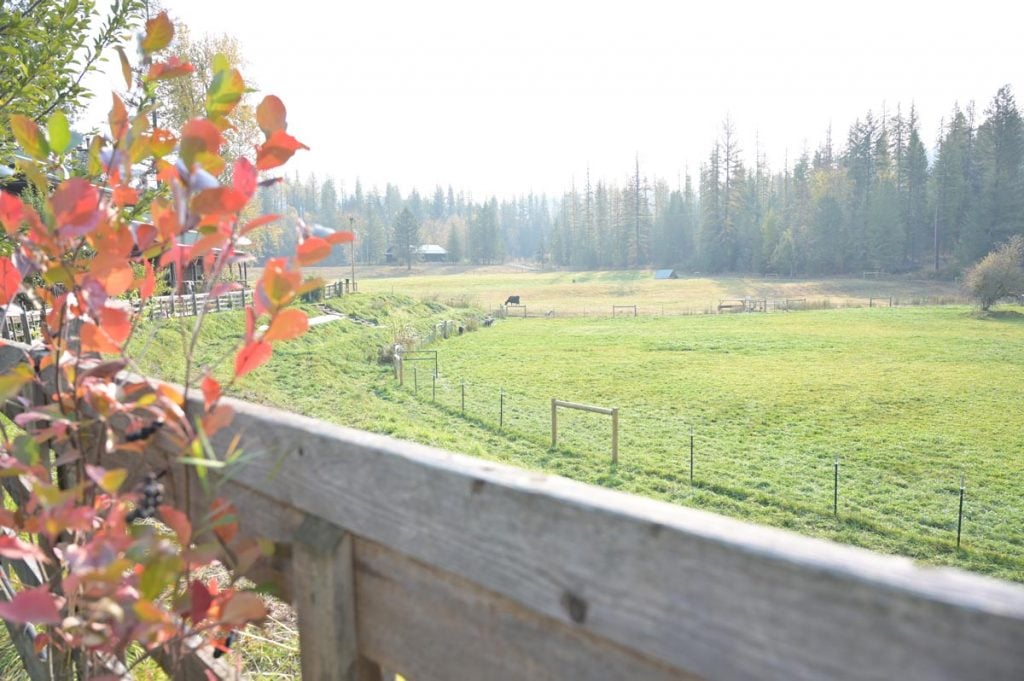
More Posts You May Enjoy
- Rotational Grazing for the Small Homestead
- How to Raise a Year’s Worth of Meat
- Preparing the Homestead for Winter
- Does Homesteading Save You Money?
- Our Homestead Journey (Apartment to 40 Acres)
- How to Get Started Homesteading
- 7 Things You Must Do On Your New Homestead
- 8 Things You Need to Know When Buying Homestead Property
- How to Pivot When Things Go Wrong on the Homestead
- Building Resilience with Justin Rhodes












